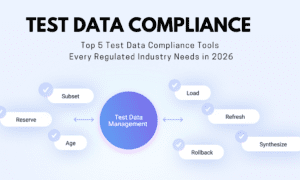The traditional models of PR management have increasingly come under scrutiny, paving the way for more progressive, results-oriented approaches.
The performance-based PR model stands out as a game-changer. Spending on performance-focused strategies grew from $6 billion to $9 billion from 2018 to 2021.
But why?
Because it ties PR fees to the results achieved, creating a mutually beneficial relationship between the client and the PR firm.
A strategy like this can help accomplish tangible outcomes and foster a culture of accountability and transparency. Keep reading to discover why the model makes sense and why it may be the right call for your company.
The Performance Model – breaking it down
The performance-based PR model places a premium on results. Instead of charging for the hours invested, it focuses on the outcomes achieved. This approach offers several advantages over traditional models.
First, it encourages innovation and creative problem-solving since success is linked to achieving shared objectives. This model also eliminates doubts about what services are provided for the fee, since it’s clear from the outset what results are expected. The performance PR model emphasizes strategic planning since PR firms must devise a strategy to guarantee success.
And finally, it promotes transparency and accountability since both parties have a vested interest in tracking progress and measuring success.
Because this approach allows clients to access top-notch services without having to invest in a full retainer service, it’s an attractive option for small businesses, nonprofits, and start-ups that don’t have the budget to engage with traditional PR firms.
Performance-Based PR vs. the Standard Model
As with any approach to PR management, performance-based models have their own set of pros and cons.
On the downside, there is a risk that PR firms may be unwilling to take certain risks to guarantee success. Additionally, clients may be hesitant to commit unless they are confident that the PR firm can deliver results.
On the positive side, however, it offers clients more bang for their buck since they only pay for the results achieved. It also helps streamline processes by focusing efforts on measurable objectives.
Kim Than, founder and CEO of The PR Genius, has been a champion of Performance PR. He notes that the performance-based model is more resilient to industry changes since it is focused on results rather than processes or hours.
“We saw a big opportunity for improvement, especially with tech companies that didn’t need consistent PR coverage. A performance PR model seemed to make the most sense – there when they need it, out of sight when they don’t.”
PR firms can quickly pivot and adapt their strategies to changing client needs and market conditions, ensuring clients get the best possible ROI from their PR campaigns. A performance-based PR agency offers the best of both worlds: cost-effectiveness and results.
Measuring Success
The performance-based PR model allows clients and agencies to accurately measure success. By setting tangible objectives, both parties can track progress over time to show that efforts yield the desired results. This is in contrast to traditional models, where this feat has proven to be much more of a challenge.
The performance-based approach provides a way for PR firms to differentiate themselves in an increasingly crowded field. By having evidence of the results that prospects want to see, they can demonstrate their value to potential clients and stand out from the competition.
The performance-based PR model is a win-win for clients and agencies alike. It allows clients to access top-level services without investing in a full retainer, while at the same time providing PR firms with a unique opportunity to differentiate themselves in the market by delivering proven results.
More than anything, this strategy emphasizes strategic planning and encourages innovation. Focusing on real results and measuring success accurately creates a powerful package when it comes to offering a suite of products for clients. Some agencies are.
Are Performance-Based PR Models the Future?
The performance-based PR model ushers in a new era of accountability and results-driven strategies in public relations. It’s a model grounded in the reality of business needs, offering a cost-effective approach that centers on tangible results rather than processes or hours invested.
It helps enable transparency, strategic planning, and innovation while enabling PR firms to demonstrate their value through proven results while enhancing the client-agency relationship.
As businesses continue to seek efficient ways to optimize their marketing budgets, the appeal of the performance-based model becomes clear. Simply put, it just makes sense. It’s a smart, practical, and forward-thinking solution for modern PR challenges.



































